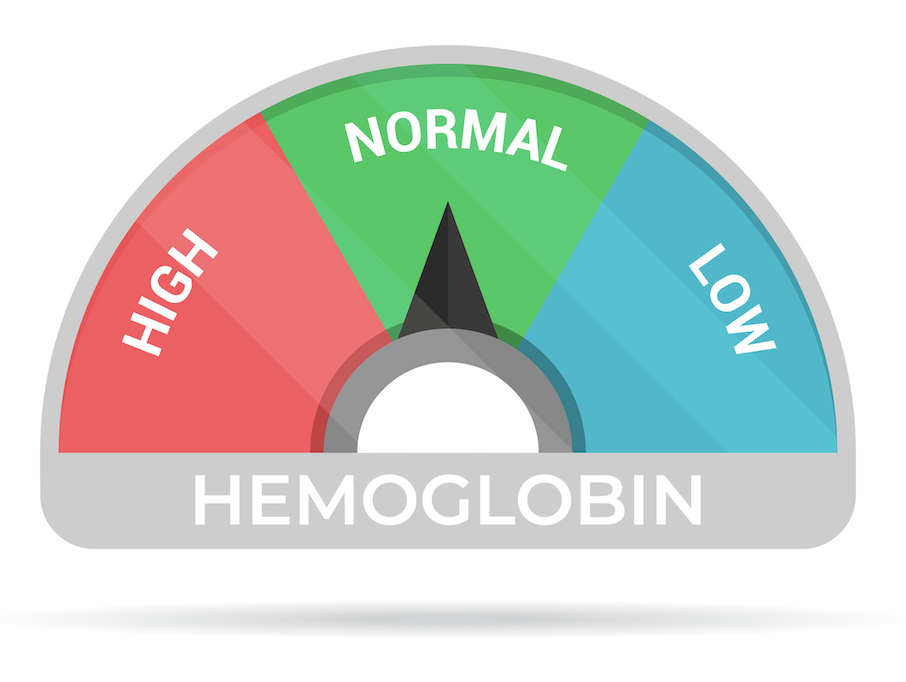
Four tips to maintain iron balance for blood donors
Volunteer blood donors have an increased risk of iron deficiency as red blood cells are the body’s major location for iron.
The most iron loss occurs with an automated double red cell donation. The least iron loss occurs with platelet and/or plasma donation. However, even platelet and plasma donors can have significant iron loss over time because of blood lost to perform donor screening tests.
Eating a diet rich in iron is unlikely to make up for all the iron lost with blood donation. Taking a daily iron supplement or a daily multivitamin containing iron for at least two months after a blood donation can help replace the lost iron. Please discuss with your health care provider before taking any new supplements.

Low hemoglobin is the #1 deferral reason
Low hemoglobin or hematocrit has sometimes been referred to as “low iron” although this term is not entirely accurate. The most common cause for low hematocrit is iron deficiency, but there are other causes. Iron deficiency can cause fatigue, weakness and even anemia. To ensure the well-being of blood donors in the Cincinnati Tri-State area, and everywhere, it's essential to maintain adequate iron levels.
Regular blood donation is a selfless act that saves lives. Unfortunately, not all people are eligible to donate blood. Having a low hemoglobin or hematocrit is the number one deferral seen at Hoxworth Blood Center, University of Cincinnati and among blood donors worldwide.
Discuss failed screening test with your primary physician
Men with screening hemoglobin or hematocrit less than 13 g/dL or 39% are ineligible to donate blood. The lower limit of the normal range of hemoglobin/hematocrit for men is approximately 13.5 g/dL or 40.5%. This can be concerning for male donors, but the screening hemoglobin/hematocrit test is not as reliable as a “venous” sample drawn into a test tube. Men may wish to discuss a failed screening test for hemoglobin/hematocrit with their primary physician.

Low to Normal Range
Women with screening hemoglobin or hematocrit less than 12.5 g/dL or 38% are ineligible to donate blood. The lower limit of the normal range of hemoglobin/hematocrit for women is approximately 12.0 g/dL or 36%, so not all women who are ineligible to donate blood are actually outside of the normal range. The hemoglobin/hematocrit is low enough that they should not donate blood to possibly fall below the lower end of the normal range.
Here are four tips and strategies to increase your iron levels and promote a healthy donation experience:
- Consider iron supplements
Dietary adjustments alone are usually insufficient to restore iron levels. If you donate blood frequently, you should consider taking iron supplements. A daily multivitamin containing at least 18 mg of elemental iron can help replenish iron losses associated with blood donation. Frequent platelet donors should also consider taking daily iron supplementation as some whole blood is taken with each donation for screening tests. However, always consult with a healthcare professional before starting any supplements to ensure proper dosage and avoid potential side effects in the context of your medical history.
- Eat iron-rich foods
Including iron-rich foods in your diet is crucial for maintaining healthy iron levels. Incorporate the following into your meals:
- Lean red meat, such as beef and lamb.
- Poultry, including chicken and turkey.
- Seafood, especially shellfish like oysters, clams and mussels.
- Plant-based sources like lentils, tofu and spinach.
- Fortified cereals and bread enriched with iron.
- Enhance your iron absorption
Pairing iron-rich foods with sources of vitamin C can significantly enhance iron absorption. Consider the following combinations:
- Enjoying a glass of orange juice with your iron-rich breakfast cereal.
- Squeezing lemon or lime juice over spinach or other leafy greens.
- Eating strawberries, tomatoes or bell peppers with your iron-rich meals.
- Including vitamin C-rich fruits or vegetables as snacks throughout the day.
- Optimize lifestyle choices
Besides diet, certain lifestyle factors can influence iron levels. Pay attention to the following aspects:
- Get enough sleep: Adequate rest and quality sleep can support iron metabolism.
- Manage stress levels: Chronic stress can negatively impact iron absorption and utilization.
- Stay hydrated: Sufficient water intake aids in the transportation of iron throughout the body.
Maintaining healthy iron levels is crucial for blood donors to continue their life-saving contributions. By incorporating iron supplementation, iron-rich foods and enhancing iron absorption with vitamin C, donors can support their iron levels effectively. Remember, before making any significant dietary or supplementation changes, it is always advisable to consult with a healthcare professional for personalized advice. Regular monitoring of iron levels, along with proper lifestyle choices, will ensure the well-being of donors and allow them to continue making a positive impact on the lives of others through blood donation.
Photo provided by Cincinnati Enquirer
Related Stories
UC research shows renewed promise for COVID-19 convalescent plasma
March 31, 2022
Research from UC shows renewed hope in reducing hospitalizations from COVID-19 through the use of convalescent plasma when given early in the disease course. The study was published in the New England Journal of Medicine.
Hoxworth celebrates March with exclusive gift for donors
March 4, 2022
Hoxworth Blood Center is celebrating the month of March with exclusive 3-in-1 tumbler/koozies for all donors
Celebrate Cicadapocalypse 2021 at Hoxworth Blood Center
May 24, 2021
Celebrate this year’s cicada invasion (or simply escape the hordes of buzzing, red-eyed locusts) by donating blood at Hoxworth Blood Center.
